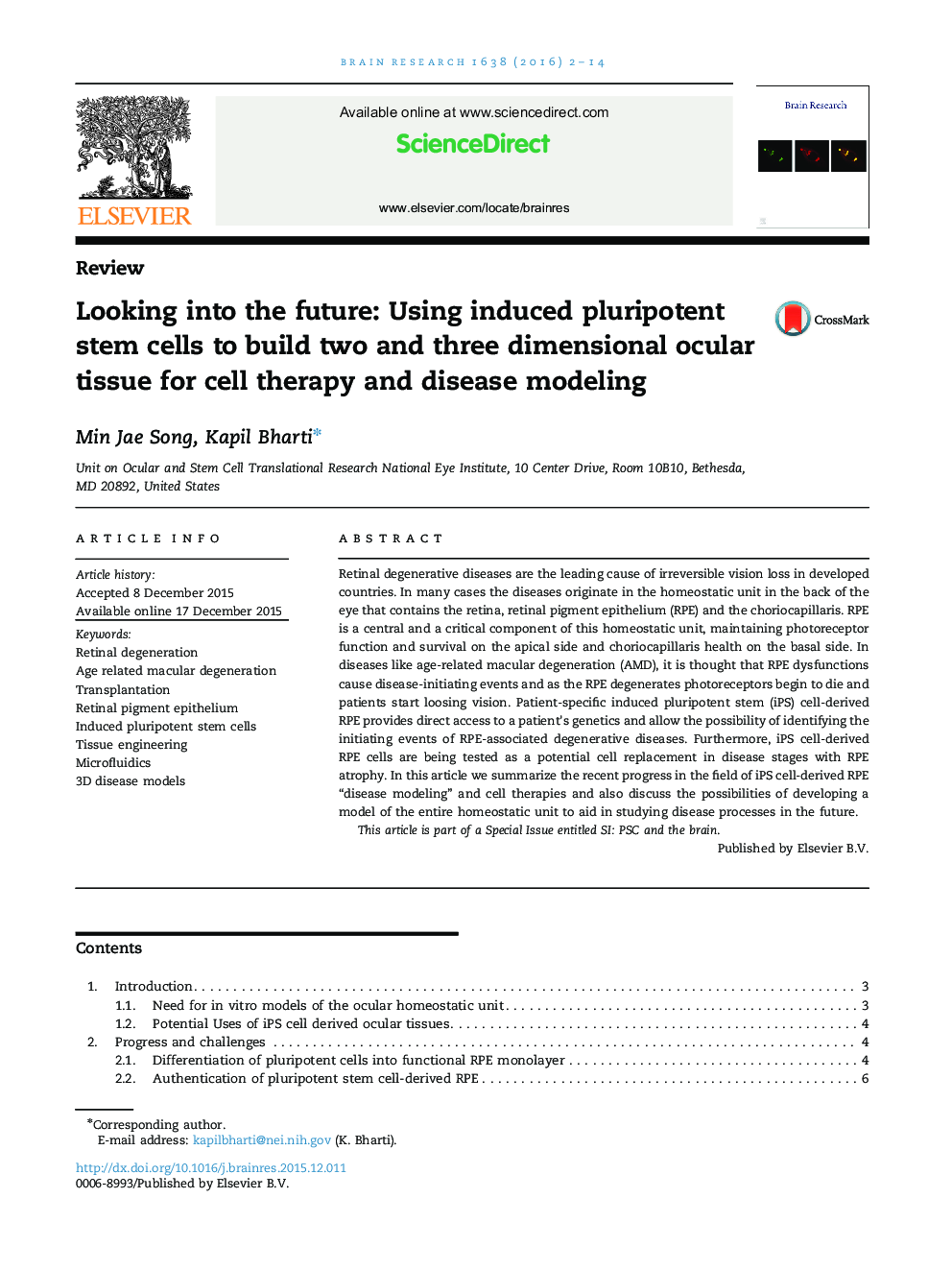| Article ID | Journal | Published Year | Pages | File Type |
|---|---|---|---|---|
| 4323657 | Brain Research | 2016 | 13 Pages |
•Current progress in differentiation of iPS cells into functional RPE cells.•Two and three-dimensional in vitro models of retinal degenerative diseases.•Transplantation of iPS cell derived RPE.
Retinal degenerative diseases are the leading cause of irreversible vision loss in developed countries. In many cases the diseases originate in the homeostatic unit in the back of the eye that contains the retina, retinal pigment epithelium (RPE) and the choriocapillaris. RPE is a central and a critical component of this homeostatic unit, maintaining photoreceptor function and survival on the apical side and choriocapillaris health on the basal side. In diseases like age-related macular degeneration (AMD), it is thought that RPE dysfunctions cause disease-initiating events and as the RPE degenerates photoreceptors begin to die and patients start loosing vision. Patient-specific induced pluripotent stem (iPS) cell-derived RPE provides direct access to a patient׳s genetics and allow the possibility of identifying the initiating events of RPE-associated degenerative diseases. Furthermore, iPS cell-derived RPE cells are being tested as a potential cell replacement in disease stages with RPE atrophy. In this article we summarize the recent progress in the field of iPS cell-derived RPE “disease modeling” and cell therapies and also discuss the possibilities of developing a model of the entire homeostatic unit to aid in studying disease processes in the future.This article is part of a Special Issue entitled SI: PSC and the brain.
